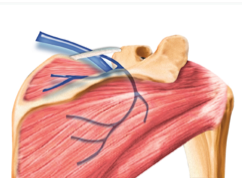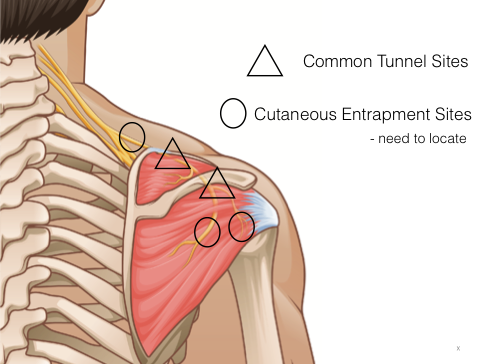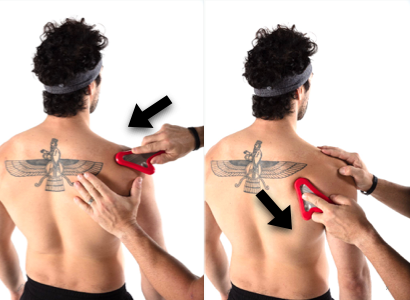As the Professional Baseball season winds down, player injuries and baseball athlete joint health become a large part of staying in the game — typically, baseball players suffer from overuse injuries, such as tendinosis’, tendinopathies and chronic soft tissue strain/weaknesses at the elbow and shoulder. Although these don’t seem like season-ending injuries, chronic pain associated with them can become burdensome.

Supra Scapular Nerve Entrapment
When treatment for persistent tendinopathies has fallen short (which is common), changing the course of assessment as well as treatment may be the alternative for better outcomes. A differential diagnosis of shoulder pain other than what has been mentioned above, could also be superficial neurosensory issues, specifically the supra scapular nerve. In other words, large nerves that also supply smaller dermatomes or “skin nerves” also play a role in shoulder function and when they are constricted, pain and weakness may be symptoms. These dermatomal impingements can also cause dull aching and tingling in the area that it serves. Since many clinicians seem to fall in the category of musculoskeletal and mechanical injury assessment, we tend to forget that sensory nerves that can become impinged between muscle and fascia, and/or multiple layers of fascia, which also play a role in musculoskeletal pain and loss of function.

To better understand the role of fascia, sensory nerves, and its associated pain, we first need to understand the concepts of fascial sliding and gliding and a “grommet hole.” A grommet hole is a cool way to think about how an artery, nerve, and vein pass through a very small spaces of multiple tissue layers. These grommet holes can become closed or shunted because the associated tissues do not glide, and slide passed each other. In healthy tissue, fascial layers will glide upon each other like two pieces of paper sliding on top of one another. When these layers become sticky or lack the slide and glide due poor tissue hydration and or “fascial densification” sensory or cutaneous nerves can become entrapped giving off danger signals causing the process of pain.

Management of this condition can be done by applying tangential shearing of tissue in pain. For instance, the posterior shoulder area or rotator cuff may have point tender pain that are also the same areas of muscle or tendon issues. After assessing the muscles and joints of the shoulder, assessing the skins’ ability to move in all directions is also paramount for a thorough evaluation. This can be done by locating the spot of pain and tangentially moving the skin in every direction while communicating to the patient if pain is increases or decreases in each direction. Once it is communicated that pain may be decreased in a certain direction, using an Instrument Assisted Soft Tissue Mobilization (IASTM) tool like the RockBlades Mohawk (with the rubber shearing sleeve attachment) is a great option to open that potential grommet hole and free up sensory nerves that may be causing the pain in the treatment location.
For more pro tip on applying kinesiology tape to baseball players and overhead throwing athletes, check out this YouTube video or sign up for RockTape’s Functional Movement Training (FMT) kinesiology taping certification series, FMT Basic & Advanced Kinesiology Taping! Can you join? Do you help people move? Then yes! FMT courses are intended for healthcare professionals, therapists, coaches and trainers – and CEUs may be offered for DC, ATC, PT, OT, LMT and personal trainers.
